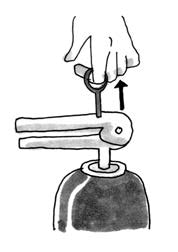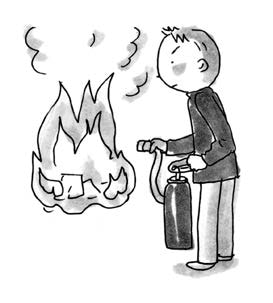- TOP
- くらし
- LIVING IN SHIBUYA
現在のページ

For Fire, Ambulance and Rescue Assistance: Dial 119 (English-speaking staff available)
Select Language(言語選択)
How to dial 119
When at home or at the office, or when using a public phone without an emergency button (red button), simply pick up the receiver and dial 119. For public phones with an emergency button (red button), press the emergency button and dial 119 (no coins or cards are required).
The procedures are the same for calling the police by dialing 110 to report a crime or traffic accident.
Emergency calls from a cellular phone or PHS
You can call the police or fire department by dialing 110 or 119, even from your cellular phone or PHS. Since they may call you back to confirm information, please do not turn your cellular phone off for about ten minutes after making your call.
Handling emergency calls to 119 from foreign residents
If you dial 119, you will be connected to the Tokyo Fire Department. The Tokyo Fire Department can handle emergency calls in English, Chinese, Korean, Portuguese and Spanish on a 24-hour basis and year-round.
In case of fire
To call a fire truck
1. The fire department has ambulances on hand as well as fire trucks so it is important first of all to specify whether you are calling about a fire or an emergency.
“Fire!” = “Kaji desu.”
2. When dialing 119 you will initially be connected to the Tokyo Fire Department switchboard so you should first indicate that you are calling from Shibuya.
“There is a fire at XXXX.” = “Shibuya-ku, XX-cho, XX-ban, XX-go de XX ga moete imasu.”
3. Give the name of your building or indicate a nearby landmark.
“I am in front of XX elementary school’s main gate.” = “XX shogakko no komon no mae desu.”
Handling an outbreak of fire
If a fire breaks out or you have noticed a fire notify the neighborhood and seek assistance with initial fire-fighting efforts after calling 119.
Fire extinguishers are useful in initial fire-fighting efforts. Please keep a fire extinguisher on hand at home and familiarize yourself with its use.



- Pull out the safety pin.
- Aim the nozzle of the hose toward the fire.
- Squeeze the lever firmly.
- First spray the flames closest to you, then steadily cover the entire blaze.
Note. Never throw water on an oil fire. Instead, use a fire extinguisher to put it out or smother it with a wet sheet.
Note. If flames have reached the ceiling it is past the point of initial efforts to extinguish the blaze and you should escape as quickly as possible.
Home fire prevention measures
The three major sources of fires in homes are arson, cigarettes and gas ranges.
- Do not leave flammable items outside your home.
- Do not smoke in bed.
- Stay by the gas range when using it and take special care when using large amounts of cooking oil during food preparation.
- Do not try to move a gas heater while it is on.
- Do not bring flammable items close to a stove or heater.
Sympathy payments for fire victims and certification of fire damage
Sympathy payments are provided for fire and flood victims.
Sympathy payments
Total destruction by fire, half-destruction, total building collapse, partial building collapse, washing away, and flooding: ¥60,000 for a household of two or more occupants, ¥30,000 per single-occupant household.
Risk Management Department, Disaster Prevention Division, Disaster Countermeasures Promotion Section
Tel:3463-4475
Certification of fire damage
When you have incurred losses due to a fire you will need to obtain a certificate that describes the actual circumstances and the extent of your losses in order to apply for tax reductions or exemptions, insurance payments, reissuance of securities, and so on. The fire station issues these certificates.
Shibuya Fire Station, Disaster Prevention Division, Disaster Countermeasures Promotion Section
Address: 1-8-3 Jinnan
Tel:3464-0119
In case of an emergency
You should call an ambulance in case of sudden illness, major injury, or other emergencies. There is no charge for the use of an ambulance, but you should avoid calling for one for a minor illness or injury. You will need to pay the doctor’s examination fee at the hospital, however. Get out your health insurance certificate and some cash before the ambulance arrives. When you hear the siren, step outside and direct the ambulance. If you have a family doctor or regularly visit a certain hospital, jot down the name and address on a memo and give it to the ambulance staff.
To call an ambulance
1. Clearly indicate whether there is a fire or an emergency:
“Emergency!” = “Kyukyu desu.”
2. State your address (in the Japanese order — ku, cho, banchi).
3. Describe the situation specifically:
“He collapsed from a heart attack.” = “Shinzo hossa de taoreta.”
4. Give the name of your building or indicate a nearby landmark.
